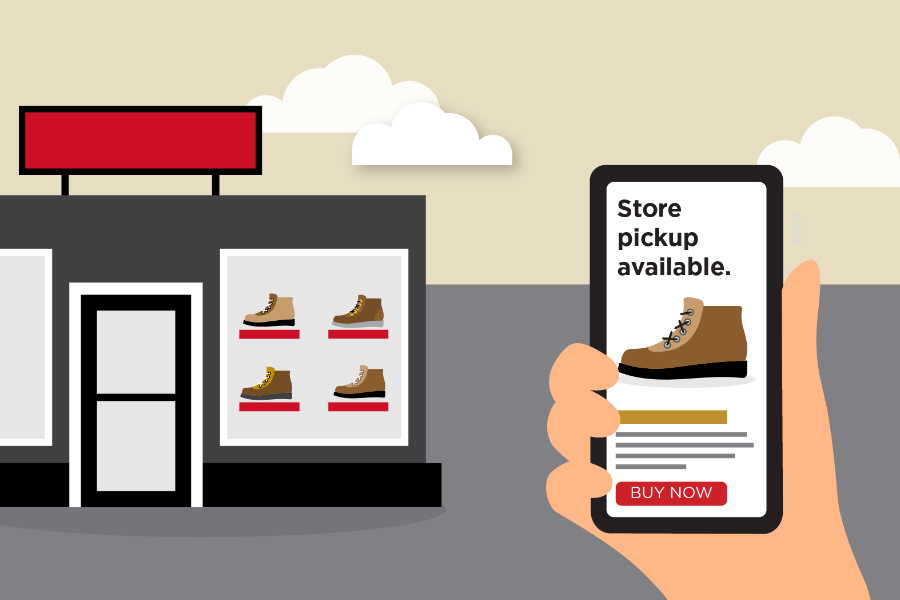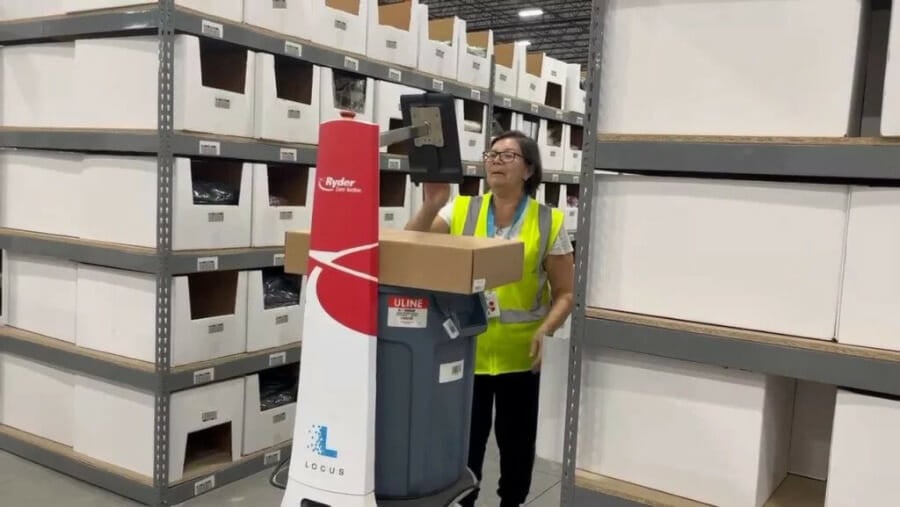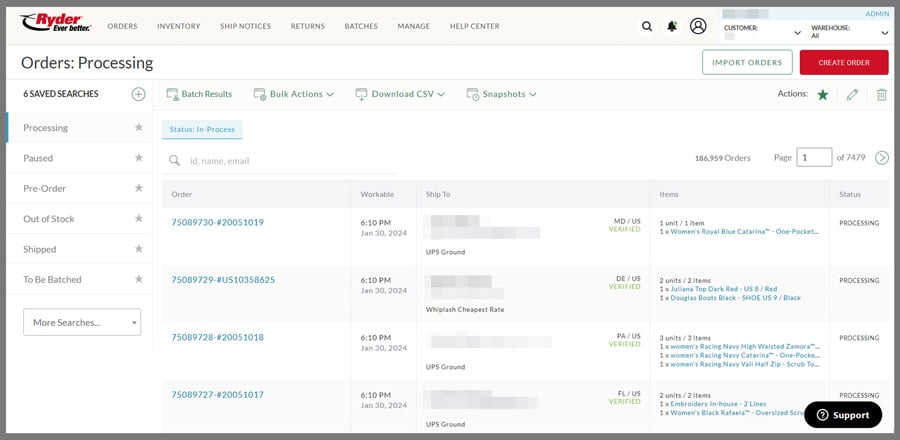Logistics
Warehousing & Fulfillment
Transportation
E-commerce
E-commerce Fulfillment Services
Lease & Maintenance
Semi Trucks
Supply Chain Technology
Logistics
E-commerce
Lease & Maintenance
Buy Used Trucks

With almost two years of the 'new normal' under our belts, the retail space has scaled significantly from its pre-pandemic size. First, there was the e-commerce boom brought on by stay-at-home restrictions. And now? E-commerce is still thriving, but the brands that are taking an omnichannel approach are finding themselves further ahead.
In 2023, e-commerce fulfillment is a very different beast than it was just a year ago. While the direct-to-consumer retail model still prevails, customer expectations are increasingly complex. Consumers want brands to meet them every step of the shopping journey - they want real-time order tracking, social media shops, in-store options, and more.
As 2023 begins, there are set to be plenty of developments that will put e-commerce merchants to the test in their mission to secure long-term customer loyalty.
In this post, we’re going to cover the 5 key e-commerce fulfillment trends for 2023 that brands should be preparing for. Let’s begin!
Labor shortages have been a sizeable part of the supply chain conversation, especially since the COVID-19 pandemic. Shortages have a drastic effect on retailers and customers worldwide, as e-commerce fulfillment requires plenty of manpower for a streamlined operation.
In 2021 and 2022, with an influx of remote roles across the globe that offer flexible hours and training, many warehouses found themselves with fewer and fewer associates willing to go against the work from home trend.
In the new year, e-commerce businesses will need to put a strong focus on employee recognition, as well as incentivize their operations to keep their top talent and attract new talent to their space. So, how can this be done?
At first glance, it may seem like including automation and robotics in a fulfillment operation would actually deter warehouse associates. Robots can do everything that humans do, right? Not quite. Most robotics and automation solutions require employees and machines to work in tandem for the most streamlined operations.
For example, LocusBots are designed to work collaboratively with warehouse associates. The robot will travel to various pick locations and present a picklist on its interface. Once they reach their location, they'll await for an associate to pick, scan, and fill the bucket that the bot is carrying. This eliminates associates pushing or carrying carts throughout the warehouse - resulting in less unproductive travel time.

Upward mobility is the number one factor in employee retention. If employees feel that they are set up for success with a specific path and career development, they are much more likely to stay. Brands that work with 3PLs that provide leadership training opportunities and the opportunity for growth are going to see a positive trickle-down all the way to their end-consumers. Happy, motivated workers are bound to put in more effort to ensure products are packed properly and orders are picked correctly.
Last but not least, put your people first. A fulfillment company that offers more flexibility in their associates' schedules, more PTO, and more robust benefits are likely to build a strong community of loyal employees. For e-commerce brands, partnering with a logistics company that puts its people first can make or break their fulfillment operations. If a 3PL is having trouble retaining employees, they may not be the best fit for a rapidly scaling brand that needs all the hands-on deck they can get.
It's no surprise that online orders have a large carbon footprint - getting products safely from the warehouse to their new homes requires a lot of energy spent on fuel and transportation. With the rise of e-commerce, carbon emissions have also begun to rise from fleets carrying packages upon packages.
Interestingly enough, as much as customers enjoy shopping online, consumer demand for sustainability efforts is at its highest. In 2023, brands that aren't actively trying to reduce their carbon footprint may lose out on a large number of customers (59% of consumers, to be exact) who are looking to purchase from businesses that align with their values.
For brands, this means that incorporating sustainability efforts into their e-commerce fulfillment operations will not only benefit the environment but boost customer satisfaction at the same time. Something as simple as offering a carbon offset at checkout or letting customers know which shipping method is the 'greenest' can help to create a more eco-friendly fulfillment process.
Advanced technology has always been a determining factor in the success of an e-commerce brand. But it's even more essential as we head into 2023.
Why? Because customer expectations for being 'in the know' are rapidly increasing. According to a survey by 4over, 96% of respondents said they track their orders daily.
The dreaded question of WISMO (where is my order?) plagues e-commerce brands across the globe - and the answer (or lack of it) can directly impact the customer experience.
Fulfillment centers that don't have up-to-date warehouse management systems will find themselves behind the curve when it comes to ensuring proper order information. Similarly, e-commerce companies who aren't making sure their partners have a WMS that can give their team real-time data will be less prepared for customer complaints about order status or delivery delays.

The Ryder E-commerce WMS allows brands to view the status of their orders in real-time through the Ryder App or go deeper with the open API. This gives brands the flexibility of adjusting destination, shipping method, and order contents right up until shipment.
In 2022, it's likely that you saw a viral TikTok video or two. And if you're like 75% of consumers, you've probably gone to social media to scope out a brand or product. In 2023, social media is going to be an even larger player in the e-commerce space.
Platforms are beginning to revamp their shopping options, with updates and new features for in-app browsing and purchasing available on apps like Instagram, Facebook, and TikTok. Brands who add social commerce into their e-commerce fulfillment strategy are going to meet many customers right where they spend a good chunk of time and money - on social media channels.
Not convinced? Over the past year, sales through social media platforms were estimated at a whopping $992 billion U.S. dollars. And, these types of sales are only expected to gain popularity in the future with forecasts of around $2.6 trillion (yes, trillion!) by 2026.
When the COVID-19 pandemic hit, brands across the globe found themselves going the direct-to-consumer route due to consumer demand shifting from brick-and-mortar distributors to e-commerce. Brands like Nike and L'oreal began selling through their own sites, stepping away from the tried-and-true department store retail model.
And while e-commerce sales and online shoppers continue to grow, supply chain disruptions, shipping costs, and fulfillment challenges have some consumers questioning whether online shopping is really worth all the hype.
With the pandemic behind us, retail trends are shifting in favor of an in-store experience once again - where consumers can test, purchase, and bring products home - all on the same day. No wait. No delays. A true one-stop shop.
Striking a balance between a DTC and a retail fulfillment strategy in 2023 will allow e-commerce brands to broaden their brand reach and cater to all consumers.
In 2023, the e-commerce landscape is larger than it has ever been before. Retailers and consumers alike are adjusting to a 'new normal' of an online and offline world.
As order fulfillment and consumer expectations become increasingly complex, technology, automation, and a customer-centric operation will be the key to a profitable business and a loyal base of customers.
By preparing for these 2023 e-commerce fulfillment trends, your business will be well-positioned to reap the rewards of a shifting retail landscape.